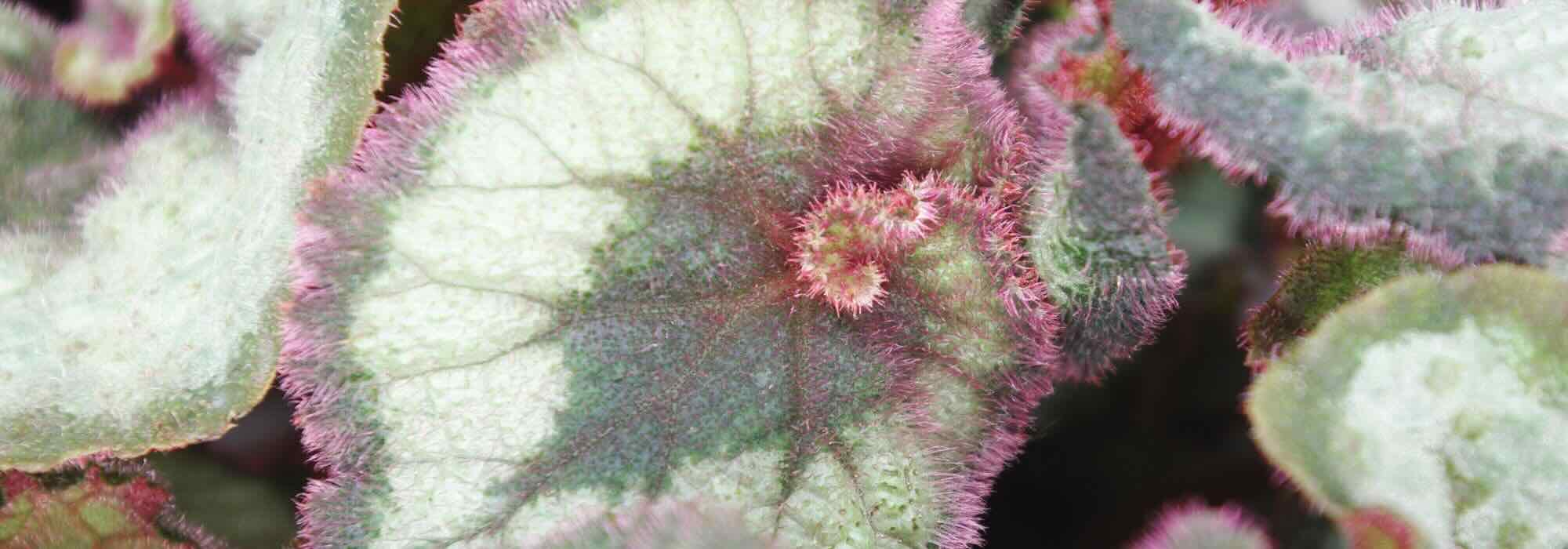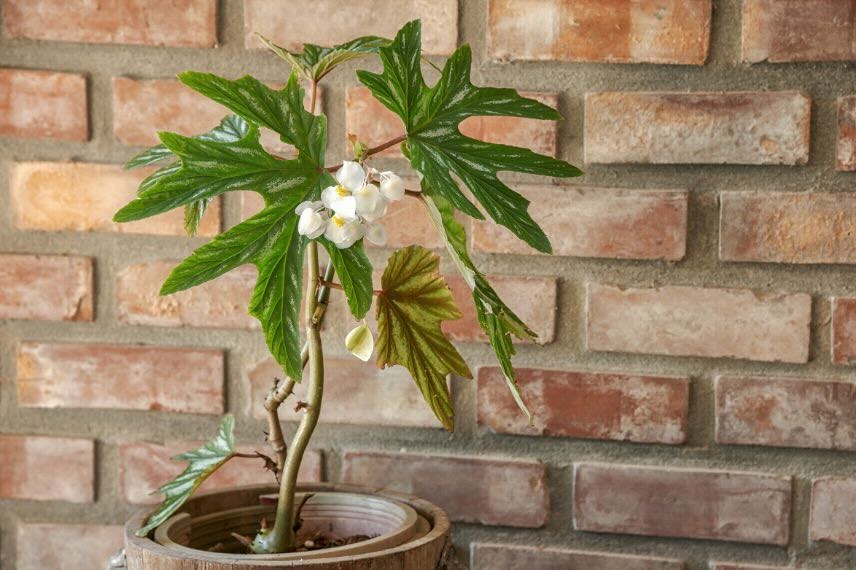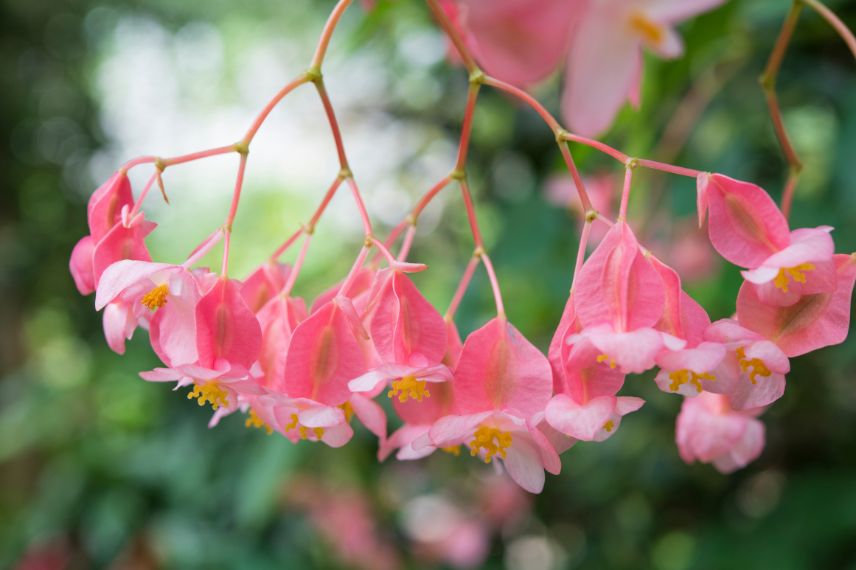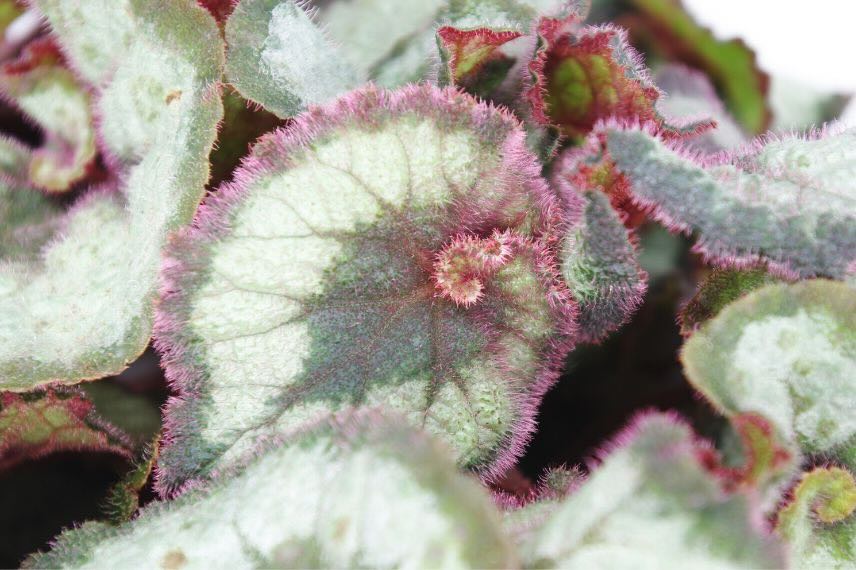
Indoor Begonias, Care Throughout the Seasons
All our tips for a healthy plant
Contents
Among the most captivating houseplants, Begonias hold a special place. Their striking foliage, varied forms and sometimes spectacular flowering make them as decorative as they are endearing. To thrive long-term, these plants require some attention and care adapted to each season.
Caring for an indoor Begonia isn’t just about weekly watering: light, humidity, temperature, dormancy periods… Everything changes throughout the year. And each type of Begonia has its preferences:
-
cane and shrub Begonias (like the popular Begonia maculata),
-
Rex hybrid Begonias, with their spectacular foliage,
-
and rhizomatous Begonias, often more compact but equally charming.
In this article, season by season, discover how to care for these beauties to keep them in top condition all year round.
Spring: The Awakening of Nature
Spring is the time when indoor Begonias slowly emerge from their winter dormancy. The days grow longer, the light returns, and the plants start growing again. It’s also the perfect season to give them a gentle boost. Here’s how to care for them during this period:
A Spring Clean
Start by removing damaged, dry, or yellowed leaves. This helps the plant focus its energy on healthy new shoots. A light pruning is possible if some stems are growing unevenly or to encourage a more compact habit (for Begonia maculata, for example).
Repotting or Dividing?
Spring is the ideal time to repot if the plant is becoming root-bound or if the soil looks exhausted. Use a light, well-draining mix, such as a high-quality houseplant compost with some perlite for drainage and optionally sphagnum moss for water retention.
- Rex Begonias: Repot them in a very airy, slightly acidic substrate.
- Rhizomatous Begonias: Divide the rootstocks if they’re overcrowded or to propagate the plant.
- Cane/Bush Begonias: Only repot if necessary, as they dislike being disturbed.
Resuming Watering
While watering is minimal in winter, in spring, increase watering to support growth. Keep the soil lightly moist, never waterlogged. Between waterings, let the top few centimetres of the substrate dry out.
Check the Location
Begonias need good light to restart their growth, but avoid direct sunlight, especially through windows, as it may scorch the leaves. Place them near a window, with a sheer curtain if needed.
A Little Fertiliser, but Gently
Start applying diluted, moderate fertiliser as soon as new shoots appear. No need to overdo it—use a liquid fertiliser for houseplants or flowering plants once a month, diluted in the watering water.

Begonia aconitifolia, fairly easy to grow
Read also
Indoor Begonias : cultivation and careSummer: Active Growth and Vigilance
Summer is the season when indoor Begonias enter their peak growth. They develop rapidly, producing new leaves and sometimes even flowers. But this dynamic period requires special attention: heat, intense light, and often drier air can pose some challenges.
Regular but Moderate Watering
During summer, water needs increase. It’s important to keep the soil slightly moist without letting it become waterlogged. Overwatering can lead to rot, especially in Rex Begonias and rhizomatous Begonias, which are particularly sensitive.
Use water at room temperature to avoid thermal shock. In hot weather, watering every 2 or 3 days may be necessary. The best approach is to check the soil surface regularly: if it’s dry to a depth of about 3 centimetres, it’s time to water.
Monitoring Ambient Humidity
Although Begonias appreciate good atmospheric humidity, around 50 to 70%, it’s best to avoid misting the leaves directly, especially for Rex Begonias, which are highly susceptible to fungal diseases. Instead, use a humidifier or group your plants together.
Fertiliser Application
This is the ideal time to feed your plants regularly. A balanced liquid fertiliser, diluted in the watering every 2 to 3 weeks, will stimulate growth and flowering. For foliage varieties like Rex Begonias, a fertiliser for green plants is sufficient, while cane and shrub-flowering types will benefit from a flowering plant fertiliser.
Pest Watch
High temperatures can encourage pests such as scale insects, aphids, or whiteflies. Regular visual checks are recommended, particularly under the leaves and around the stems. If an infestation occurs, act quickly with a gentle treatment (black soap, neem oil, or commercial solutions).

Cane Begonia blooms in summer
Autumn: A Gentle Transition
Autumn marks a period of transition. With the gradual decrease in light and temperatures, the activity of indoor Begonias slows down little by little. Now is the time to start adjusting care to prepare the plant for the cold season.
Gradually Reduce Watering
As the plant requires less water, it is important to reduce the frequency of watering. The growing medium can dry out more between waterings, especially for rhizomatous Begonias, which often enter a semi-dormant phase. The goal is to avoid any moisture stagnation, which can lead to root diseases.
→ Be careful: if your Begonia is in a plastic pot, the growing medium may be waterlogged at the bottom while dry on the surface. Check the pot more carefully, especially if you tend to overwater. Terracotta pots, being porous, allow water to drain more quickly and evenly.
Space Out, Then Stop Fertilising
As growth slows, nutritional needs decrease. Space out fertiliser applications from September onwards, then stop completely by mid-autumn. Too many nutrients during the dormant period can disrupt the plant’s balance.
Maintenance and Cleaning
A little tidying up is beneficial: remove damaged or fallen leaves, which can attract diseases. Light pruning can also be done to maintain a compact shape, especially for cane and shrub-like Begonias.
Adjust Light Exposure
With shorter days, it becomes crucial to place plants in the brightest spot possible. Moving them to a more exposed window may be necessary, while avoiding cold draughts.
Specifics Depending on Begonia Types
- Rex Begonias are particularly sensitive to changes in light and humidity. A sudden drop in these factors can cause leaf drop.
- Rhizomatous Begonias may show signs of dormancy; their water needs decrease significantly.
- Cane and shrub-like Begonias tolerate autumn well if they receive enough light and are not exposed to temperature fluctuations.

Begonia rex are slightly more sensitive than others to changes in growing conditions
Winter: Well-Earned Rest
Winter is a period of partial or complete vegetative rest for many indoor Begonias. Even though some continue to produce a few leaves or flowers, most significantly slow down their activity. Care should then be adjusted to accommodate this calmer rhythm and avoid common mistakes.
Minimal Watering
In winter, evaporation is reduced, and the plant consumes little water. It is therefore essential to greatly reduce watering. For rhizomatous Begonias, this period often corresponds to an almost complete halt in water supply.
→ Caution: excess water in winter is one of the main causes of root rot.
No Fertiliser
During this rest period, fertiliser is unnecessary, even harmful. Unabsorbed nutrients accumulate in the soil, which can disrupt the plant’s balance or burn the roots.
Maximum Light
Light often becomes insufficient in winter, especially in poorly exposed interiors. It is recommended to place Begonias near a south- or west-facing window, if possible, or consider supplemental lighting with a horticultural lamp. Always ensure they are protected from cold draughts and icy windowpanes.
Stable Temperature
Begonias are sensitive to cold. The ambient temperature should not drop below 15°C, or not for too long (some tolerate a minimum of 10°C), especially for the most delicate varieties like Rex Begonias. Also avoid direct heat sources (radiators, convectors), which dry the air and harm the foliage.
Observe Without Over-Intervening
In winter, it is normal for some leaves to yellow or fall. Don’t panic: as long as the plant’s core remains healthy, this is simply a natural slowdown. It’s best to leave the plant undisturbed, maintaining a stable, bright, and temperate environment.
In Summary
Winter is not a time for neglect, but for attentive monitoring and patience. By providing Begonias with a calm and stable environment, we allow them to recharge their energy for a stronger comeback in spring.
- Subscribe!
- Contents
































Comments